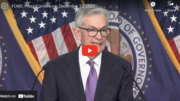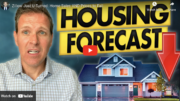For many older adults – generally 62 years and above – a reverse mortgage is a good way to generate cash from assets without having to physically sell their homes, property, or investments. In such an agreement, the bank or lending institution agrees to pay the homeowner a lump sum or stream of cash in exchange for the equity in their homes. When the homeowner sells the house or passes away, the bank then has rights to the house and can sell it for a profit on the open market.
Usually, clients who are higher in age or higher value homes are able to receive more in a reverse mortgage, since they are subject to strict limits by the Federal Housing Administration. Recently, there has been a wave of conventional mortgage refinancing by homeowners as interest rates have fallen. They’re making lower monthly payments and paying less interest on their loans because of the extremely conducive interest rate environment.
Since reverse mortgages are relatively rare in comparison to conventional ones, it may not be immediately apparent that these loans can be refinanced as well.In addition to better interest rates, the reverse mortgage recipient may have other reasons for refinancing. FHA limits on their initial amounts have risen in many regions, allowing homeowners to tap a bigger portion of their home equity and receive higher payments. In addition, home values have bottomed out and are rising in many areas, which increases the appraisal that reverse mortgage sums are based on.
Like any other loan reconstruction, there are often upfront costs associated with reverse mortgage refinancing. It is therefore important that those considering the option talk to their lender about the costs and benefits of refinancing in their particular situation. In some cases, increased home value, older age, and lower interest rates will make it well worth it to pay the immediate cost and refinance. In others, keeping the reverse mortgage terms the same might be the better overall choice.







